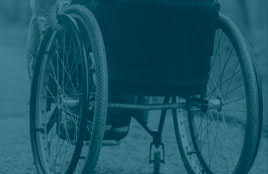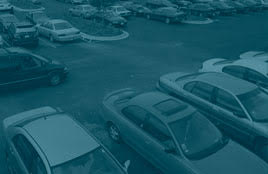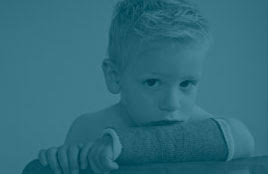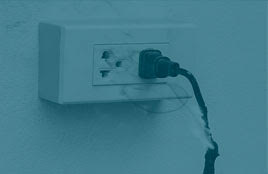If you have small children in your life – you’ve probably had a high chair or a booster seat in your home. We take these pieces of furniture for granted and we assume our children are safe when we put them in them. However, millions of high chairs have been recalled in recent years, and injuries associated with their use are actually on the rise.
A new study by researchers at the Center for Injury Research and Policy of The Research Institute at Nationwide Children’s Hospital in Ohio, scrutinized data relating to children younger than age 3, who were treated in U.S. emergency departments from 2003 through 2010 for high chair-related injuries. On average, more than 9,400 children were treated each year for an injury associated with a high chair or booster seat, that’s 24 children a day, and the numbers have been increasing over time.
The study found that 93 percent of the injuries associated with a high chairs or booster seats, involved a fall. In the cases that contained information about what the child was doing just before the fall, two-thirds of the children injured were climbing or standing in the chair. This hints that the chair’s safety restraint system was either was not being used, or was useless in these cases.
The Center for Injury Research noted that high chairs are typically used in kitchens and dining areas, so when a child falls from the height of the high chair, he is often falling head first onto a hard surface with significant force, and can result in a serious head injury. Closed head injuries were the most common emergency room diagnosis associated with high chair falls (37 percent) followed by bumps/bruises (33 percent) and cuts (19 percent). The number one thing parents can do to prevent injuries related to high chairs is to use the safety restraint system in the chair. Buckling your child in every time you use the high chair can help keep them safe. My kids were like Houdini, if they weren’t strapped in, they could wiggle their way out of any high chair. You cannot rely upon the tray in front of the child to keep them in the chair – it is not, and was never designed to be, a restraint.
Tips from Nationwide Children’s Hospital, for keeping children safe in high chairs include:
- Always use the safety straps. Buckling the child in the seat with the straps every time he is in the high chair will help set a routine and keep him safe by keeping him seated and securely in the chair. Make sure the straps are in good working order and firmly attached to the chair. Only use chairs with either a 3-point or 5-point harness that includes a crotch strap or post. Remember – the tray is not enough to keep children in the seat.
- Use high chairs appropriately during meal time. Teach your child that her high chair is where she sits for eating. Allowing her to play, climb or stand in the chair can cause it to tip over. Also make sure that older siblings know not to climb on the chair.
- Keep the area around the high chair clear. Children are naturally curious and will grab things in their reach. Make sure tablecloths, placemats, sharp silverware, plates and hot food and liquids are out of reach. Also be aware of where you put the high chair. If it is too close to the table, a counter or the wall, the child may knock the chair over by kicking their feet into these objects.
- Make sure the chair is stable. Before selecting a high chair for your child, test it out. Chairs with wide bases are often more stable. Using high chairs that meet current safety standards is important. If the chair has wheels, make sure that they are locked into place before use.
- Stay with your child during meal time. An unsupervised child is more likely to try to escape from his high chair and can also be more likely to choke on his food.
- Check for recalls. Millions of unsafe high chairs have been recalled during recent years. Make sure the one you are using does not have any known injury hazards.
Checking for recalls on high chairs and booster seats is very important. Go to the Consumer Products Safety Commission to see if your high chair or booster has been recalled. Some of the below were recalled voluntarily by the manufacturer, others, a mandatory recall. Below, is a partial list of recalls of high chairs, just within the past three years.
03/18/2010: Graco Recalls Harmony™ High Chairs Due to Fall Hazard
The screws holding the front legs of the high chair can loosen and fall out and/or the plastic bracket on the rear legs can crack causing the high chair to become unstable and tip over unexpectedly. This poses a fall hazard to children. Incidents/Injuries: Graco has received 464 reports of screws loosening/falling out and/or plastic brackets cracking causing the high chair to tip over unexpectedly. These tip-over’s resulted in 24 reports of injuries including bumps and bruises to the head, a hairline fracture to the arm, and cuts, bumps, bruises and scratches to the body.
09/30/2010: Fisher-Price Recalls Healthy Care, Easy Clean and Close to Me High Chair
This recall involves the Healthy Care, Easy Clean and Close to Me High Chairs with pegs on the back legs intended for tray storage. The high chairs have a folding frame for storage and a three-position reclining seat. The model number and date code of the high chair is on the back of the seat. All Easy Clean and Close To Me High Chairs are included in this recall. Only Healthy Care High Chairs manufactured before December 2006 are included in the recall. If the fourth digit in the date code is 6 or less, the Healthy Care High Chair is included in the recall.
01/05/2012: IKEA Recalls to Repair High Chairs Due to Fall Hazard
The high chair’s restraint buckle can open unexpectedly, posing a fall hazard to the child. IKEA has received eight reports worldwide of restraint buckles that opened unexpectedly, including three reports of children who received minor injuries after falling from the high chair. This recall involves ANTILOP high chairs sold in red, blue or white. The plastic high chair has detachable silver-colored metal legs. High chairs included in the recall have a manufacture date between 0607 and 0911 from supplier number 17389.
06/05/2012: Evenflo Recalls Convertible High Chairs Due to Fall Hazard
The activity tray on the high chair can unexpectedly detach and allow an unrestrained child to fall, posing a risk of injury to the child. Incidents/Injuries: Evenflo has received 18 reports of trays that detached, including eight reports of children who fell from the high chair and sustained bumps and bruises. Evenflo Recalls Convertible High Chairs Due to Fall Hazard Recall number 12192, 12-192, #12-192, #12192.
07/12/2012: Chicco Polly High Chairs Recalled Due to Laceration Hazard
Children can fall on or against the pegs on the rear legs of the high chair, resulting in a bruising or laceration injury. Incidents/Injuries: The firm is aware of 21 reports of incidents in which a child fell against the peg and received injuries, including four laceration injuries requiring medical closure (stitches, tape or glue) and one scratched cornea. Chicco Polly High Chairs Recalled Due to Laceration Hazard Recall Number 12221, 12-22.
10/09/2012: Graco Recalls Classic Wood Highchairs Due to Fall Hazard
The high chair’s seat can loosen or detach from the base, posing a fall hazard to the child. Incidents/Injuries: Graco has received 58 reports of the high chairs’ seats loosening or detaching from the base. There have been nine reports of children falling as the seat detached from the base, resulting in reports of bumps, bruises and scratches. Graco Recalls Classic Wood Highchairs Due to Fall Hazard Recall Number 13006, 13-006, #13-006, #13006.
10/18/2012: Dream On Me Recalls High Chairs Due to Strangulation Hazard
A child’s body can become trapped at the neck between two different openings in the high chair if the child is not buckled in. Also, exposed springs can pinch a child. Dream On Me Recalls High Chairs Due to Strangulation Hazard Recall Number 13013.
03/28/2013: BabyHome USA Recalls High Chairs Due to Strangulation Hazard
The opening between the tray and seat bottom of the high chair can allow an infant’s body to pass through and become trapped at the neck. BabyHome USA Recalls High Chairs Due to Strangulation Hazard Recall Number 13155, 13-155, #13-155, #13155.






